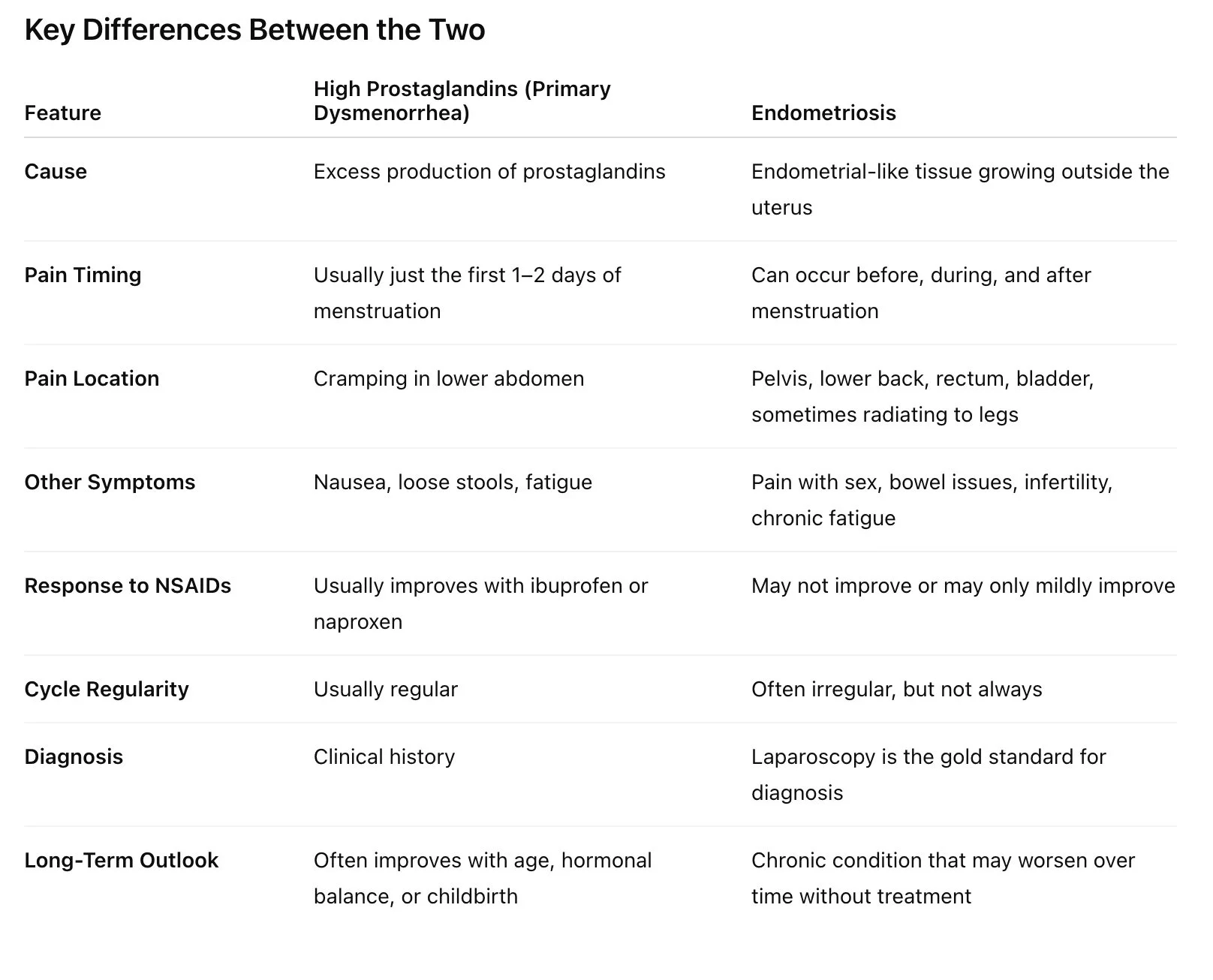Decoding Menstrual Pain: Hormonal Imbalance or Endometriosis?
Mascari, Brooke - June 5th, 2025
For many women, period pain is a common, though frustrating, part of the menstrual cycle. But when cramps become intense, debilitating, or interfere with daily life, it’s essential to look deeper. Two common causes of painful periods are endometriosis and elevated prostaglandins. While the symptoms may appear similar at first, the underlying causes and long-term implications are very different.
What Are Prostaglandins?
Prostaglandins are hormone-like substances produced in the lining of the uterus. Their job is to stimulate the muscles of the uterus to contract and shed the endometrial lining during menstruation. This process causes the familiar cramping sensation.
Some women produce higher levels of prostaglandins, especially prostaglandin F2α, which causes stronger uterine contractions. This can lead to:
Intense cramping (especially on the first one to two days of bleeding)
Nausea
Diarrhea or loose stools
Headaches
Fatigue
This is referred to as primary dysmenorrhea and is not caused by an underlying disease, but rather by an imbalance in inflammatory mediators.
What Is Endometriosis?
Endometriosis, on the other hand, is a chronic medical condition in which tissue similar to the endometrial lining grows outside of the uterus—on the ovaries, fallopian tubes, bladder, bowels, or even in more distant parts of the body. Unlike prostaglandin-induced pain, endometriosis pain is often more complex and multi-layered.
Symptoms of endometriosis may include:
Severe, often chronic pelvic pain, not just during menstruation
Pain during or after intercourse
Pain with bowel movements or urination (especially during menstruation)
Infertility
Fatigue, bloating, and digestive issues
Spotting between periods or irregular bleeding
Endometriosis-related pain is due to inflammation, internal bleeding from the misplaced tissue, scar formation, and nerve involvement, not just uterine contractions.
Why the Distinction Matters
Understanding the root cause of period pain is essential for appropriate treatment. Women with high prostaglandins may benefit from:
Anti-inflammatory diets
Omega-3 supplementation
Magnesium and B-vitamin support
Hormonal balancing therapies
NSAIDs taken at the onset of symptoms (although this is not the goal because of the health risks involved, but NSAIDs can give temporary relief if necessary)
Women with suspected endometriosis, however, often require:
A referral to a specialist
Imaging (though not always definitive)
Laparoscopic surgery for diagnosis and treatment
Hormonal suppression therapies
Lifestyle and dietary changes to manage inflammation
Ignoring endometriosis or assuming it’s “just bad cramps” can delay diagnosis by years—research shows the average delay is 7–10 years from symptom onset. Early intervention can help preserve fertility, reduce pain, and improve quality of life.
To Conclude
Painful periods are not something women should have to simply "deal with." While some menstrual discomfort is normal, anything that disrupts your life or leaves you in bed every month deserves attention.
Whether your pain stems from prostaglandin overload or something more complex like endometriosis, there are holistic and medical solutions to help you feel better and take back control of your cycle.
Love and blessings on your journey, and don’t hesitate to reach out for personalized support!

